Who’s on First, Abbott and Costello’s classic routine, first reached the general public as part of the Kate Smith Radio Hour in 1938. It then appeared on almost every radio network at some time or another before reaching TV in the 1950s. (The routine’s authorship, as I’ve noted elsewhere, is more controversial than its broadcast history.) The routine can easily be found many places on the Internet – as a script, as audio recordings, or as videos. Some of its widespread availability is from widely-used commercial services (such as YouTube), some is from organized groups of fans, and some is from individuals. The sources are distributed widely across the Internet (in the IP-address sense).
 I can easily find and read, listen to, or watch Who’s on First pretty much regardless of my own network location. It’s there through the Internet2 connection in my office, through my AT&T mobile phone, through my Sprint mobile hotspot, through the Comcast connections where I live, and through my local coffeeshops’ wireless in DC and Chicago.
I can easily find and read, listen to, or watch Who’s on First pretty much regardless of my own network location. It’s there through the Internet2 connection in my office, through my AT&T mobile phone, through my Sprint mobile hotspot, through the Comcast connections where I live, and through my local coffeeshops’ wireless in DC and Chicago.
This, most of us believe, is how the Internet should work. Users and content providers pay for Internet connections, at rates ranging from by buying coffee to thousands of dollars, and how fast one’s connection is thus may vary by price and location. One may need to pay providers for access, but the network itself transmits similarly no matter where stuff comes from, where it’s going, or what its substantive content is. This, in a nutshell, is what “network neutrality” means.
Yet network neutrality remains controversial. That’s mostly for good, traditional political reasons. Attaining network neutrality involves difficult tradeoffs among the economics of network provision, the choices available to consumers, and the public interest.
Tradeoffs become important when they affect different actors differently. That’s certainly the case for network neutrality:
- Network operators (large multifunction ones like AT&T and Comcast, large focused ones like Verizon and Sprint, small local ones like MetroPCS, and business-oriented ones like Level3) want the flexibility to invest and charge differently depending on who wants to transmit what to whom, since they believe this is the only way to properly invest for the future.
- Some Internet content providers (which in some cases, like Comcast, are are also networks) want to know that what they pay for connectivity will depend only on the volume and technical features of their material, and not vary with its content, whereas others want the ability to buy better or higher-priority transmission for their content than competitors get — or perhaps to have those competitors blocked.
- Internet users want access to the same material on the same terms regardless of who they are or where they are on the network.
Political perspectives on network neutrality thus vary depending on who is proposing what conditions for whose network.
But network neutrality is also controversial because it’s misunderstood. Many of those involved in the debate either don’t – or won’t – understand what it means for a public network to be neutral, or indeed what the difference is between a public and a private network. That’s as true in higher education as it is anywhere else. Before taking a position on network neutrality or whose job it is to deal with it, therefore, it’s important to define what we’re talking about. Let me try to do that.
 All networks discriminate. Different kinds of network traffic can entail different technical requirements, and a network may treat different technical requirements differently. E-mail, for example, can easily be transmitted in bursts – it really doesn’t matter if there’s a fifty-millisecond delay between words – whereas video typically becomes jittery and unsatisfactory if the network stream isn’t steady. A network that can handle email may not be able to handle video. One-way transmission (for example, a video broadcast or downloading a photo) can require very different handling than a two-way transmission (such as a videoconference). Perhaps even more basic, networks properly discriminate between traffic that respects network protocols – the established rules of the road, if you will – and traffic that attempts to bypass rule-based network management.
All networks discriminate. Different kinds of network traffic can entail different technical requirements, and a network may treat different technical requirements differently. E-mail, for example, can easily be transmitted in bursts – it really doesn’t matter if there’s a fifty-millisecond delay between words – whereas video typically becomes jittery and unsatisfactory if the network stream isn’t steady. A network that can handle email may not be able to handle video. One-way transmission (for example, a video broadcast or downloading a photo) can require very different handling than a two-way transmission (such as a videoconference). Perhaps even more basic, networks properly discriminate between traffic that respects network protocols – the established rules of the road, if you will – and traffic that attempts to bypass rule-based network management.
Network neutrality does not preclude discrimination. Rather, as I wrote above, a network behaves neutrally if it avoids discriminating on the basis of (a) where transmission originates, (b) where transmission is destined, and (c) the content of the transmission. The first two elements of network neutrality are relatively straightforward, but the third is much more challenging. (Some people also confuse how fast their end-user connection is with how quickly material moves across the network – that is, someone paying for a 1-megabit connection considers the Internet non-neutral if they don’t get the same download speeds as someone paying for a 26-megabit connection – but that’s a separate issue largely unrelated to neutrality.) In particular, it can be difficult to distinguish between neutral discrimination based on technical requirements and non-neutral discrimination based on a transmission’s substance.In some cases the two are inextricably linked.
Consider several ways network operators might discriminate with regard to Who’s on First.
 Alpha Networks might decide that its network simply can’t handle video streaming, and therefore might configure its systems not to transmit video streams. If a user tries to watch a YouTube version of the routine, it won’t work if the transmission involves Alpha Networks. The user will still be able to read the script or listen to an audio recording of the routine (for example, any of those listed in the Media|Audio Clips section of http://www.abbottandcostello.net/). Although refusing to carry video is clearly discrimination, it’s not discrimination based on source, destination, or content. Alpha Networks therefore does not violate network neutrality.
Alpha Networks might decide that its network simply can’t handle video streaming, and therefore might configure its systems not to transmit video streams. If a user tries to watch a YouTube version of the routine, it won’t work if the transmission involves Alpha Networks. The user will still be able to read the script or listen to an audio recording of the routine (for example, any of those listed in the Media|Audio Clips section of http://www.abbottandcostello.net/). Although refusing to carry video is clearly discrimination, it’s not discrimination based on source, destination, or content. Alpha Networks therefore does not violate network neutrality. Beta Networks might be willing to transmit video streams, but only from providers that pay it to do so. Say, purely hypothetically, that the Hulu service – jointly owned by NBC and Fox – were to pay Beta Networks to carry its video streams, which include an ad-supported version of Who’s on First. Say further that Google, whose YouTube streams include many Who’s on First examples, were to decline to pay. If Beta Networks transmitted Hulu’s versions but not Google’s, it would be discriminating on the basis of source – and probably acting non-neutrally.
Beta Networks might be willing to transmit video streams, but only from providers that pay it to do so. Say, purely hypothetically, that the Hulu service – jointly owned by NBC and Fox – were to pay Beta Networks to carry its video streams, which include an ad-supported version of Who’s on First. Say further that Google, whose YouTube streams include many Who’s on First examples, were to decline to pay. If Beta Networks transmitted Hulu’s versions but not Google’s, it would be discriminating on the basis of source – and probably acting non-neutrally.
What if Hulu and Google use slightly different video formats? Beta might claim that carrying Hulu’s traffic but not Google’s was merely technical discrimination, and therefore neutral. Google would probably disagree. Who resolves such controversies – market behavior, the courts, industry associations, the FCC – is one of the thorniest points in the national debate about network neutrality. Onward…
 Gamma Networks might decide that Who’s on First ridicules and thus disparages St. Louis (many performances of the routine refer to “the St Louis team”, although others refer to the Yankees). To avoid offending customers, Gamma might refuse to transmit Who’s on First, in any form, to any user in Missouri. That would be discrimination on the basis of destination. Gamma would violate the neutrality principle.
Gamma Networks might decide that Who’s on First ridicules and thus disparages St. Louis (many performances of the routine refer to “the St Louis team”, although others refer to the Yankees). To avoid offending customers, Gamma might refuse to transmit Who’s on First, in any form, to any user in Missouri. That would be discrimination on the basis of destination. Gamma would violate the neutrality principle.- Delta Networks, following Gamma’s lead, might decide that Who’s on First disparages not just St. Louis, but professional baseball in general. Since baseball is the national pastime, and perhaps worried about lawsuits, Delta Networks might decide that Who’s on First should not be transmitted at all, and therefore it might refuse to carry the routine in any form. That would be discrimination on the basis of content. Delta would be violating the neutrality principle.
- Epsilon Networks, a competitor to Alpha, might realize that refusing to carry video disserves customers. But Epsilon faces the same financial challenges as Alpha. In particular, it can’t raise its general prices to cover the expense of transmitting video since it would then lose most of its customers (the ones who don’t care about video) to Alpha’s lesser but less expensive service. Rather than block video, Epsilon might decide to install equipment that will enable video as a specially provided service for customers who want it, and to charge those customers – but not its non-video customers – extra for the added capability. Whether an operator violates network neutrality by charging more for special network treatment of certain content – the usual term for this is “managed services” – is another one of the thorniest issues in the national debate.
 As I hope these examples make clear, there are various kinds of network discrimination, and whether they violate network neutrality is sometimes straightforward and sometimes not. Things become thornier still if networks are owned by content providers or vice versa – or, as is more typical, if there are corporate kinships between the two. Hulu, for example, is partly owned by NBC Universal, which is becoming part of Comcast. Can Comcast impose conditions on “outside” customers, such as Google’s YouTube, that it does not impose on its own corporate cousin?
As I hope these examples make clear, there are various kinds of network discrimination, and whether they violate network neutrality is sometimes straightforward and sometimes not. Things become thornier still if networks are owned by content providers or vice versa – or, as is more typical, if there are corporate kinships between the two. Hulu, for example, is partly owned by NBC Universal, which is becoming part of Comcast. Can Comcast impose conditions on “outside” customers, such as Google’s YouTube, that it does not impose on its own corporate cousin?
Why do we give a shortstop (whose name, lest you didn’t read to the end of the Who’s on First script, is “darn”)? That is, why is network neutrality important to higher education? There are two principal reasons.

First, as mobility and blended learning (the combination of online and classroom education) become commonplace in higher education, it becomes very important that students be able to “attend” their college or university from venues beyond the traditional campus. To this end, it is very important that colleges and universities be able to provide education to their students and interconnect researchers over the Internet. This should be constrained only by the capacity of the institution’s connection to the Internet, the technical characteristics of online educational materials and environments, and the capacity of students’ connections to the Internet.
Without network neutrality, achieving transparent educational transmission from campus to widely-distributed students could become very difficult. The quality of student experience could come to depend on the politics of the network path from campus to student.To address this, each college and university would need to negotiate transmission of its materials with every network operator along the path from campus to student. If some of those network operators negotiate exclusive agreements for certain services with commercial providers – or perhaps with other colleges or universities – it could become impossible to provide online education effectively.
Second, many colleges and universities operate extensive networks of their own, or together operate specialized inter-campus networks for education, research, administrative, and campus purposes. Network traffic inconsistent with or detrimental to these purposes is managed differently than traffic that serves them. It is important that colleges and universities retain the ability to manage their networks in support of their core purposes.
Networks that are operated by and for the use of particular organizations, like most college and university networks, are private networks. Private and public networks serve different purposes, and thus are managed based on different principles. The distinction is important because the national network-neutrality debate – including the recent FCC action, and its evolving judicial, legislative, and regulatory consequences – is about public networks.
Private networks serve private purposes, and therefore need not behave neutrally. They are managed to advance private goals. Public networks, on the other hand, serve the public interest, and so – network-neutrality advocates argue – should be managed in accordance with public policy and goals. Although this seems a clear distinction, it can become murky in practice.
For example, many colleges and universities provide some form of guest access to their campus wireless networks, which anyone physically on campus may use. Are guest networks like this public or private? What if they are simply restricted versions of the campus’s regular network? Fortunately for higher education, there is useful precedent on this point. The Communications Assistance for Law Enforcement Act (CALEA), which took effect in 1995, established principles under which most college and university campus networks are treated as private networks – even if they provide a limited set of services to campus visitors (the so-called “coffee shop” criterion).
Higher education needs neutrality on public networks because those networks are increasingly central to education and research. At the same time, higher education needs to manage campus networks and private networks that interconnect them in support of education and research, and for that reason it is important that there be appropriate policy differentiation between public and private networks.
Regardless, colleges and universities need to pay for their Internet connectivity, to negotiate in good faith with their Internet providers, and to collaborate effectively on the provision and management of campus and inter-campus networks. So long as colleges and universities act effectively and responsibly as network customers, they need assurance that their traffic will flow across the Internet without regard to its source, destination, or content.
And so we come to the central question: Assuming that higher education supports network neutrality for public networks, do we care how its principles – that public networks should be neutral, and that private ones should be manageable for private purposes – are promulgated, interpreted, and enforced? Since the principles are important to us, as I outlined above, we care that they be implemented effectively, robustly, and efficiently. Since the public/private distinction seems to be relatively uncontroversial and well understood, the core issue is whether and how to address network neutrality for public networks.
There appear to be four different ideas about how to implement network neutrality.
 A government agency with the appropriate scope, expertise, and authority could spell out the circumstances that would constitute network neutrality, and prescribe mechanisms for correcting circumstances that fell short of those. Within the US, this would need to be a federal agency, and the only one arguably up to the task is the Federal Communications Commission. The FCC has acted in this way, but there remain questions whether it has the appropriate authority to proceed as it has proposed.
A government agency with the appropriate scope, expertise, and authority could spell out the circumstances that would constitute network neutrality, and prescribe mechanisms for correcting circumstances that fell short of those. Within the US, this would need to be a federal agency, and the only one arguably up to the task is the Federal Communications Commission. The FCC has acted in this way, but there remain questions whether it has the appropriate authority to proceed as it has proposed.- The Congress could enact laws detailing how public networks must operate to ensure network neutrality. In general, it has proven more effective for the Congress to specify a broad approach to a public-policy problem, and then to create and/or empower the appropriate government agency to figure how what guidelines, regulations, and redress mechanisms are best. Putting detail into legislation tends to enable all kinds of special negotiations and provisions, and the result is then quite hard to change.
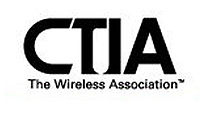 The networking industry could create an internal body to promote and enforce network neutrality, with appropriate powers to take action when its members fail to live up to neutrality principles. Voluntary self-regulatory entities like this have been successful in some contexts and not in others. Thus far, however, the networking industry is internally divided as to the wisdom of network neutrality, and without agreement on the principle it is hard to see how there could be agreement on self-regulation.
The networking industry could create an internal body to promote and enforce network neutrality, with appropriate powers to take action when its members fail to live up to neutrality principles. Voluntary self-regulatory entities like this have been successful in some contexts and not in others. Thus far, however, the networking industry is internally divided as to the wisdom of network neutrality, and without agreement on the principle it is hard to see how there could be agreement on self-regulation.- Network neutrality could simply be left to the market. That is, if network neutrality is important to customers, they will buy services from neutral providers and avoid services from non-neutral providers. The problem here is that network neutrality must extend across diverse networks, and individual consumers – even if they are large organizations such as many colleges and universities – interact only with their own “last mile” provider.
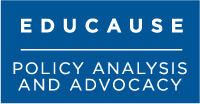 Those of us in higher education who have been involved in the network-neutrality debates have come to believe that among these four approaches the first is most likely to yield success and most likely to evolve appropriately as networking and its applications evolve. This is especially true for wireless (that is, cellular) networking, where there remain legitimate questions about what level of service should be subject to neutrality principles, and what kinds of service might legitimately be considered managed, extra-cost services.
Those of us in higher education who have been involved in the network-neutrality debates have come to believe that among these four approaches the first is most likely to yield success and most likely to evolve appropriately as networking and its applications evolve. This is especially true for wireless (that is, cellular) networking, where there remain legitimate questions about what level of service should be subject to neutrality principles, and what kinds of service might legitimately be considered managed, extra-cost services.
In theory, the national debate about network neutrality will unfold through four parallel processes. Two of these are already underway: the FCC has issued an order “to Preserve Internet Freedom and Openness”, and at least two network operators have filed lawsuits challenging the FCC’s authority to do that. So we already have agency and court involvement, and we can possiible congressional actions and industry initiatives to round out the set.
One thing’s sure: This is going to become more complicated and confusing…
Lou: I get behind the plate to do some fancy catching, Tomorrow’s pitching on my team and a heavy hitter gets up. Now the heavy hitter bunts the ball. When he bunts the ball, me, being a good catcher, I’m gonna throw the guy out at first base. So I pick up the ball and throw it to who?
Bud: Now that’s the first thing you’ve said right.
Lou: I don’t even know what I’m talking about!
 Most of you reading this are probably too young to have seen Seven Days in May, in which Burt Lancaster, as General James Mattoon Scott, helps break up a military coup attempt within the United States. Good conspiracy story, so-so flick, old helicopters, and it harps on a weird bit of technology: every time Scott talks with his counterparts, they fire up big, old, black-and-white console TVs in their offices so they can see each other’s heads as they talk.
Most of you reading this are probably too young to have seen Seven Days in May, in which Burt Lancaster, as General James Mattoon Scott, helps break up a military coup attempt within the United States. Good conspiracy story, so-so flick, old helicopters, and it harps on a weird bit of technology: every time Scott talks with his counterparts, they fire up big, old, black-and-white console TVs in their offices so they can see each other’s heads as they talk.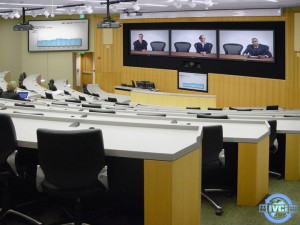 Finally, although I’ve spent a great deal of time in online presentation, communication, and collaboration using specialized videoconferencing facilities, I’ve come to believe that they are most effective only for few-to-few communications. They’re reasonable for few-to-few collaboration, but this use case usually produces some push-and-pull between looking at other participants and working together on documents or whiteboards. They’re not very effective for presentations or many-to-many interactions because except in rare cases there are capacity limitations (although interesting counterexamples are emerging, such as some classrooms at Duke’s Fuqua business school).
Finally, although I’ve spent a great deal of time in online presentation, communication, and collaboration using specialized videoconferencing facilities, I’ve come to believe that they are most effective only for few-to-few communications. They’re reasonable for few-to-few collaboration, but this use case usually produces some push-and-pull between looking at other participants and working together on documents or whiteboards. They’re not very effective for presentations or many-to-many interactions because except in rare cases there are capacity limitations (although interesting counterexamples are emerging, such as some classrooms at Duke’s Fuqua business school).
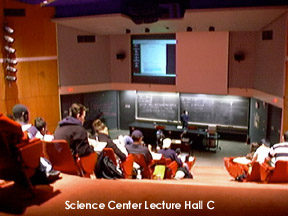















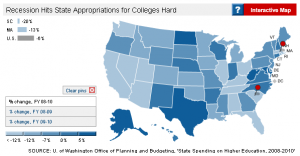
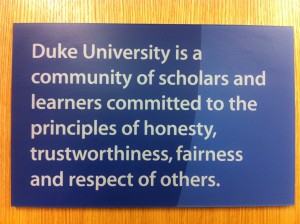


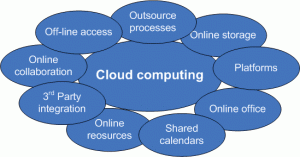







 the traveler bought, say, a drink for someone, and whereas the expense-reporting policy allows and requires no receipts for taxi fares under $25 or so, it doesn’t allow buying drinks.
the traveler bought, say, a drink for someone, and whereas the expense-reporting policy allows and requires no receipts for taxi fares under $25 or so, it doesn’t allow buying drinks.


